Last Chance to Catch NYC's Holiday Notalgia Train
We met the voices of the NYC subway on our nostalgia ride this weekend!


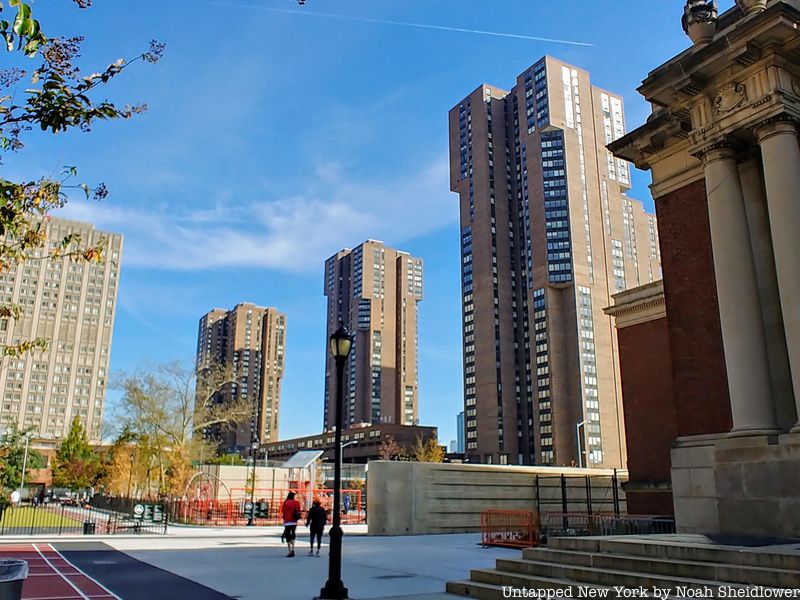
The riverside neighborhood of Kips Bay may be small, but it’s packed with architectural gems both new and old, fascinating remnants of New York City history, and a diverse cultural scene. Kips Bay is located on the east side of Manhattan loosely bounded by East 34th Street and East 23rd Street, as well as by Lexington Avenue/Third Avenue and the East River. Located south of Murray Hill and roughly east of Rose Hill, Kips Bay hosts a bit over 50,000 residents.
The neighborhood is named for Dutch settler Jacobus Hendrickson Kip, whose father had a farm along East 30th Street by the river. Kip built a home in 1655 that stood until 1851, making it the last remaining farmhouse from New Amsterdam in Manhattan at the time of its destruction. It was also said that the garden of the farm grew a rose plant presented to George Washington during his inauguration.
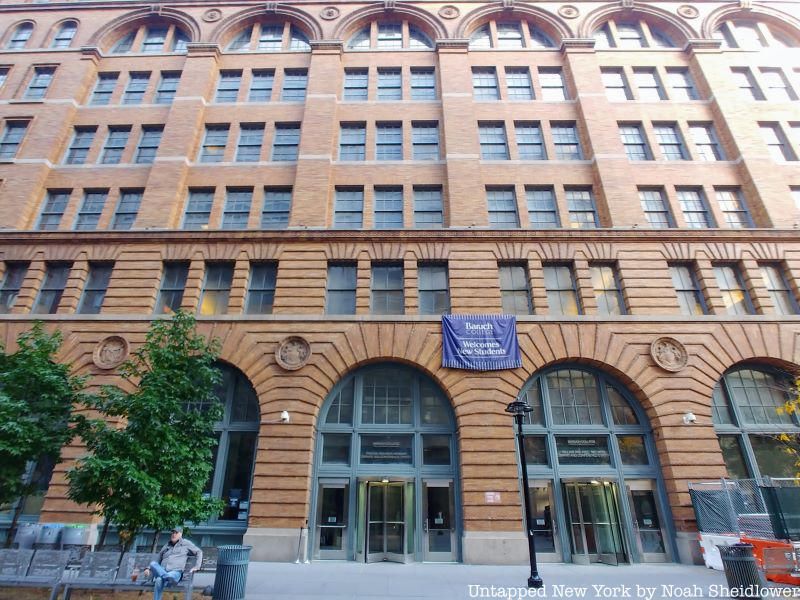
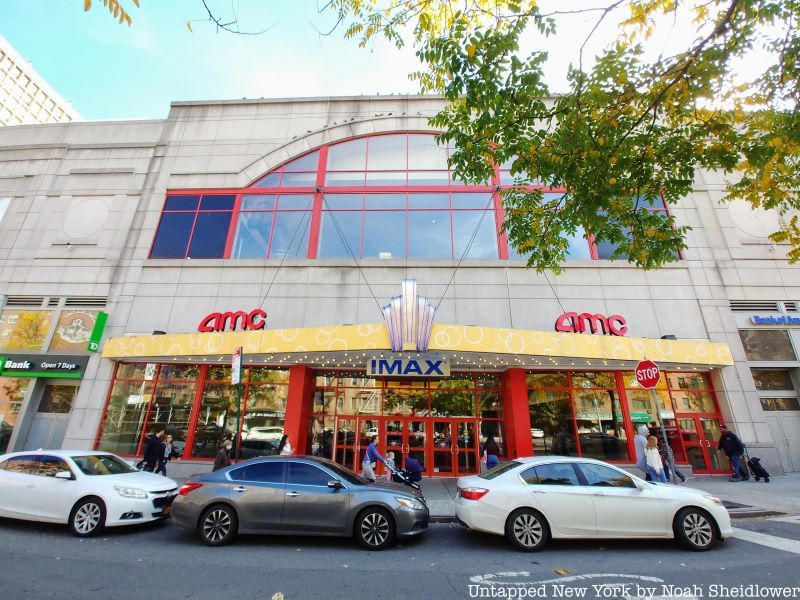
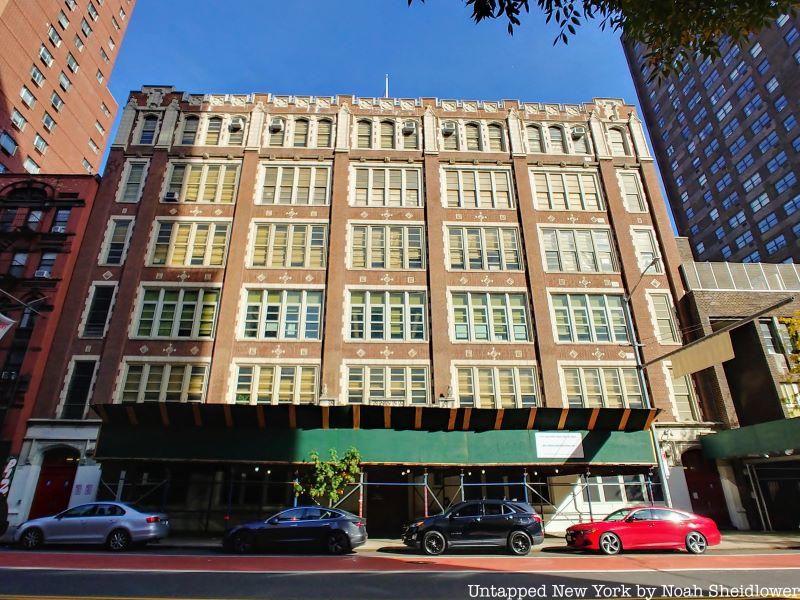
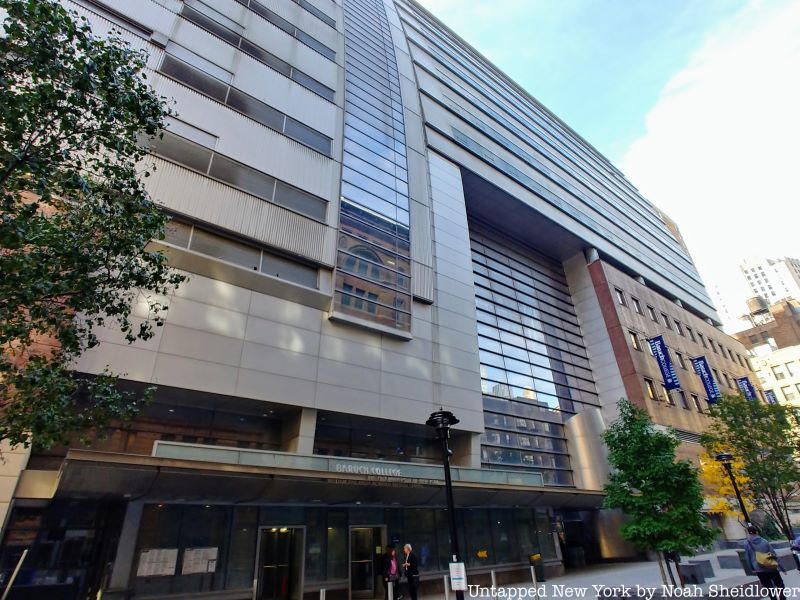
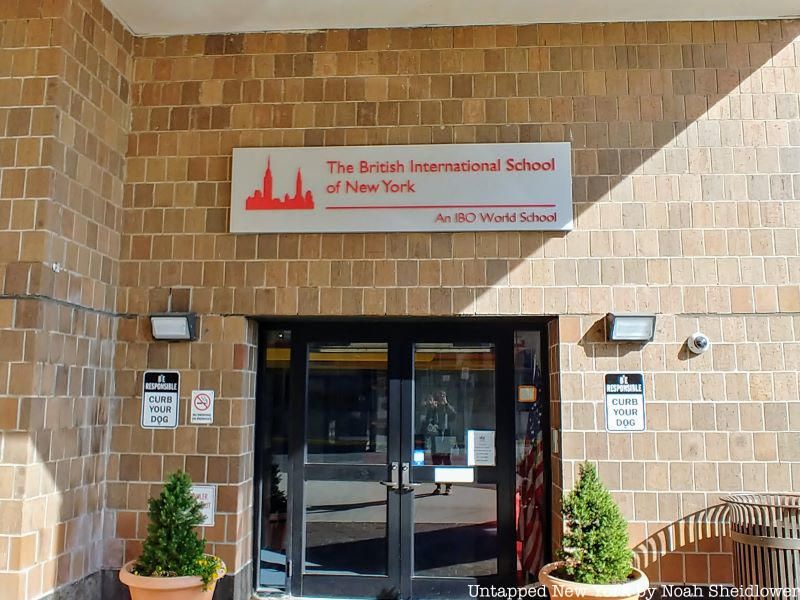
Kips Bay is known for its many medical facilities and schools, including much of NYU Langone, Bellevue Hospital, the School of Visual Arts, Baruch College, the United National International School, and an American Sign Language high school. Read on to discover secrets and spots to explore in Kips Bay, from the home of a U.S. president to a surprising piece of Nazi history.
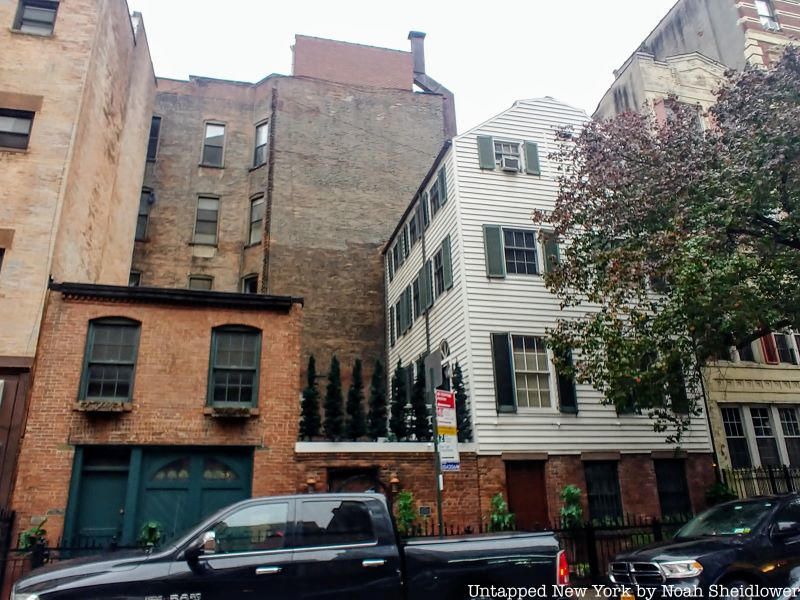
203 East 29th Street is a historical carriage house built sometime between 1790 and around 1820 in Kips Bay. The home is located between 2nd and 3rd Avenue and is one of Manhattan’s only remaining wooden houses. The home is sometimes considered a “floating farmhouse” because its three white wooden floors sit atop a bottom layer of brick. This partially explains why the home’s construction year is so hard to pinpoint: because of the size of the lot, it’s likely that the home may have been relocated from somewhere else in Kips Bay/Rose Hill after its original construction in the late 1700s.
In 2006 New York Times article tried to investigate the home’s history, though even that publication could not find a definitive answer. An 1830 tax assessment noted how there were two lots and one building at the site, though it’s unclear if the current home stood on the lot at the time. An 1840 tax assessment concluded that a home was on the lot with no height or size, while an 1860 assessment concluded the home had three floors, not four. It took until 1880 for an official confirmation that the home really was four stories. Perhaps surprisingly, this carriage house was actually a junk store for decades. The home received National Register of Historic Places status in 1982, around when it was restored by John Sanguilano.
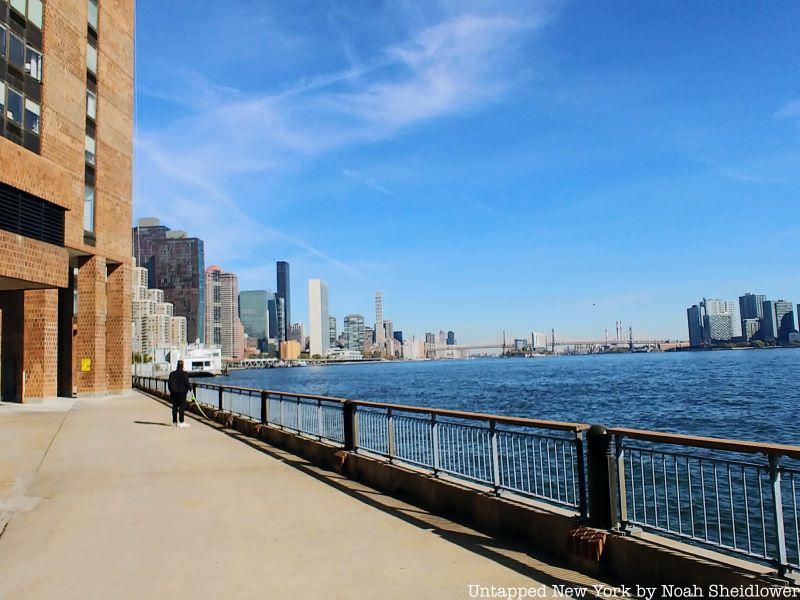
Waterside Plaza was built on landfill made of converted rubble from Bristol, an English city that was bombed during World War II by the Luftwaffe. The event, called the Bristol Blitz, led to the deaths of 1,300 people and damaged nearly 90,000 buildings. The buildings at Waterside Plaza were constructed atop landfill shipped overseas from this attack, and concrete piles were sunk into the East River. A plaque at Bristol Basin, rededicated in 1972 by the actor Cary Grant – a Bristol native whose family survived the bombings – reads:
“Beneath this East River Drive of the City of New York lie stones, bricks and rubble from the bombed City of Bristol in England. Brought here in ballast from overseas, these fragments that once were homes shall testify while men love freedom to the resolution and fortitude of the people of Britain. They saw their homes struck down without warning. It was not their walls but their valor that kept them free. And broad-based under all is planted England’s oaken-hearted mood, as rich in fortitude as e’er went worldward from the island wall.”
Waterside Plaza consists of four residential towers overlooking the East River, as well as a row of duplex townhouses. Opened in 1973, Waterside Plaza is the only residential complex to the east of the FDR Drive. It has been recognized by architectural critics, receiving the Construction Achievement Project of the Year Award from the American Society of Civil Engineers. The British International School of New York was established in 2006 at Waterside Plaza, which is bordered by the United Nations International School, one of the pilot schools for the International Baccalaureate.
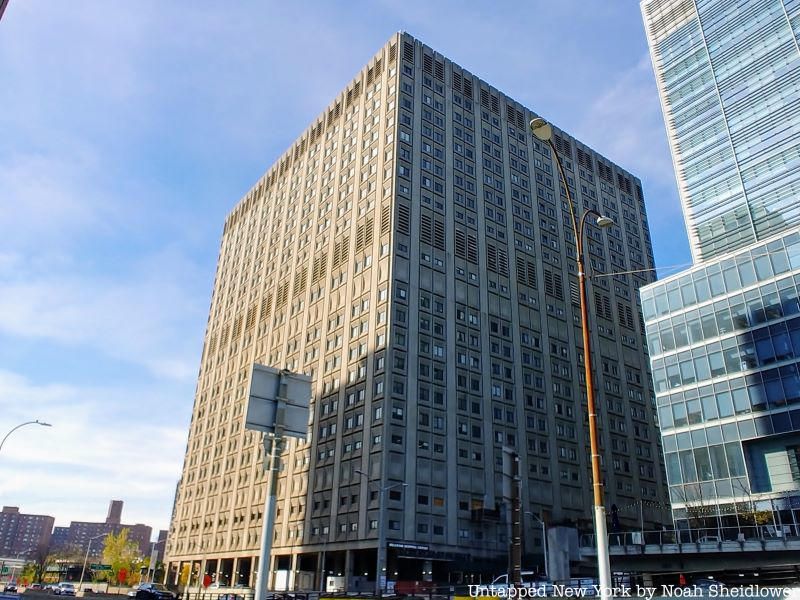
Bellevue Hospital, located on First Avenue in Kips Bay, is the oldest public hospital in the country. The hospital’s origins date back all the way to a two-story almshouse built in 1736 by current-day City Hall Park. The name Bellevue comes from a farm called Belle Vue, which was acquired by the city in 1798 and was used to quarantine yellow fever patients. Columbia University sent faculty and medical students to care for the sick at the farm as early as 1787, and as operations shifted to become broader, New York University began clinical instruction at the hospital in 1819. Bellevue Hospital Medical College opened in 1861, and in 1873, the country’s first nursing school based on Florence Nightingale’s teachings opened at the hospital.
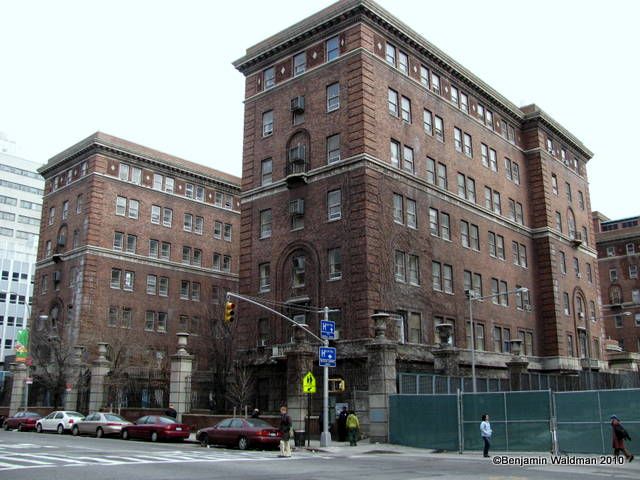
That decade, Bellevue opened the nation’s first children’s clinic and emergency pavilion. Bellevue also hosts some other “oldest” accomplishments: the nation’s first maternity ward, the first sanitary code, the first pathology lab, the first men’s nursing school, and the first comprehensive surgical residency training program. It was the second hospital-based emergency ambulance service in the country, as well as one of the first outpatient departments. It also paved the way for female and Black physicians in the early 1900s, some of whom worked at pioneering metabolic disorder and cardiac wards. After introducing some of the world’s first specialized units and departments, Bellevue continues to be one of the largest in the country, appearing frequently in popular culture, from serving as the place of treatment for people like Mark David Chapman and Norman Mailer, to appearing as a film location in series such as NBC’s “New Amsterdam.”
Kips Bay is home to a number of other medical buildings, many associated with New York University: Tisch Hospital, Kimmel Pavilion, Rusk Rehabilitation, Grossman School of Medicine, and NYU College of Dentistry. As with researchers at Bellevue Hospital, NYU Langone Health has contributed to major scientific and medical breakthroughs since its founding in 1841. Researchers at Grossman were among the first to notice a sharp rise in Kaposi’s sarcoma and immune system failure in young gay men, which ultimately became the HIV/AIDS crisis. This research contributed to treatments for those affected and widespread awareness across the country, saving potentially thousands of lives. Grossman faculty and alumni have also contributed to treatments for tuberculosis and yellow fever, as well as polio and hepatitis B vaccines. Some of the first minimally invasive surgical techniques were developed at NYU. Hassenfeld Children’s Hospital, also in Kips Bay, has been a leader in pediatric care for decades, opening a new facility in 2018 and performing a double lung surgery just last year.
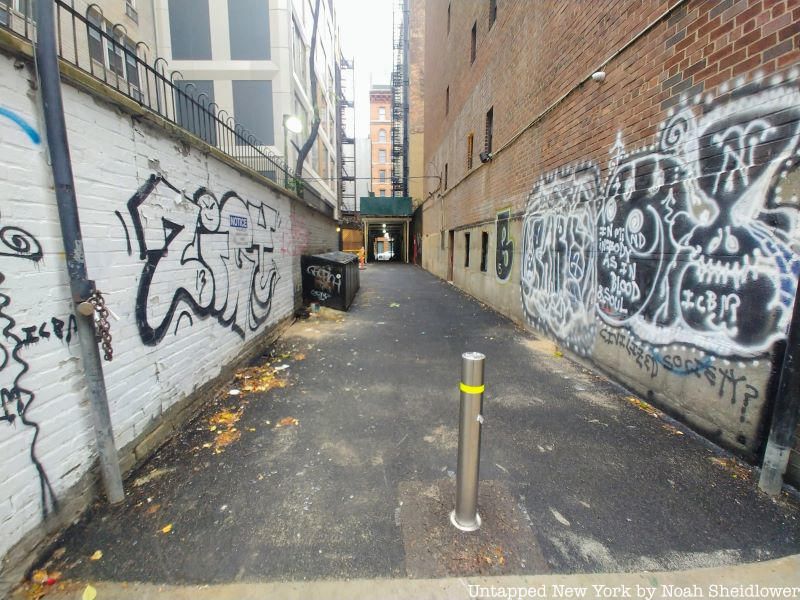
New Yorkers and tourists alike are familiar with Manhattan’s famous Broadway, which runs from the bottom tip of Manhattan up through the Bronx and into Westchester. However, most may not know that there are a handful of other roadways named Broadway scattered across New York City. There is a mostly forgotten Old Broadway in Manhattanville. An avenue in Brooklyn called Broadway extends from Williamsburg to Ocean Hill. Queens has two Broadways, one extending from the Astoria area to Elmhurst, the other a one-block road in Springfield Gardens. Staten Island even has its own Broadway.
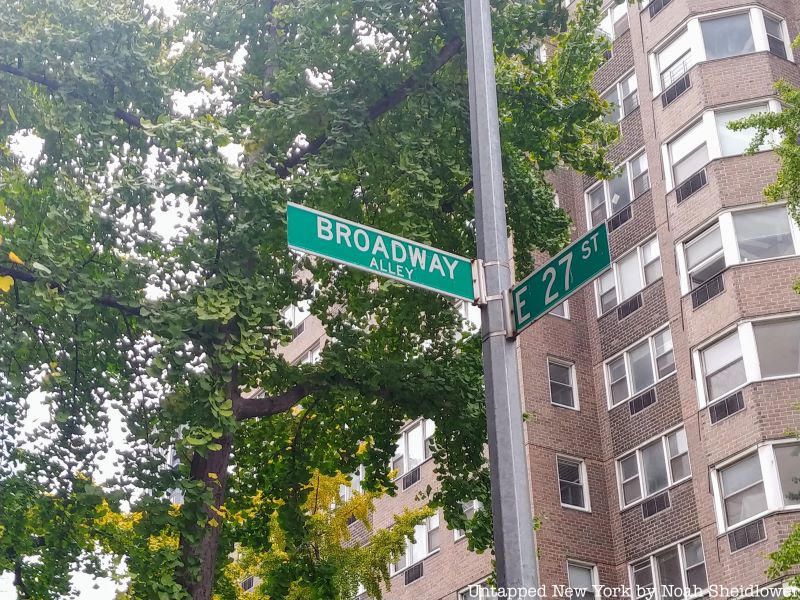
Chances are, most New Yorkers probably have never come across Broadway Alley in Kips Bay. The roadway sits between 26th and 27th Streets and between Lexington and Third Avenues. The alley, which is now open to pedestrians, was named by the street’s owners so it would be associated with the nearby Theater District.
For much of its early existence, however, it was associated with anything but wealth and the arts. The alley was home to tightly packed tenements and was a path plagued with gambling, drinking, and crime. Broadway Alley was considered one of the last unpaved roads in Manhattan and was also supposedly where the Ringling Brothers kept their circus elephants, according to Ephemeral New York.
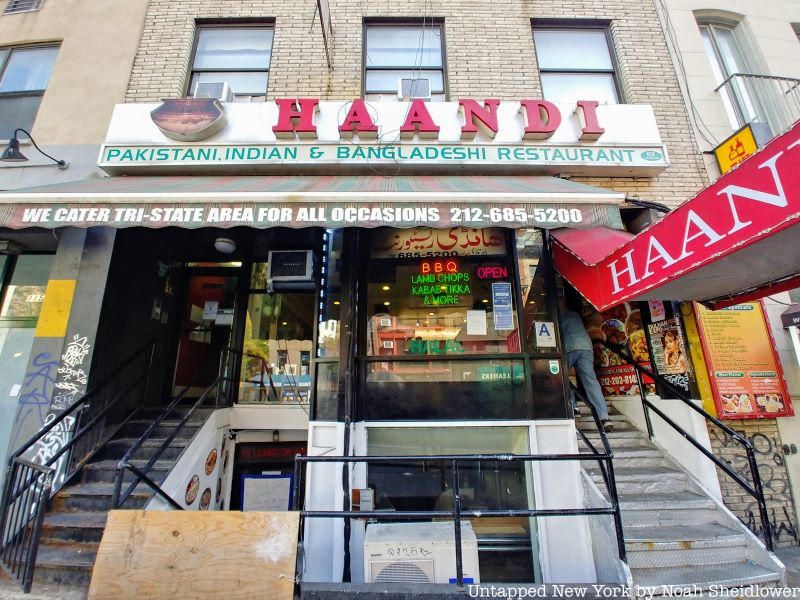
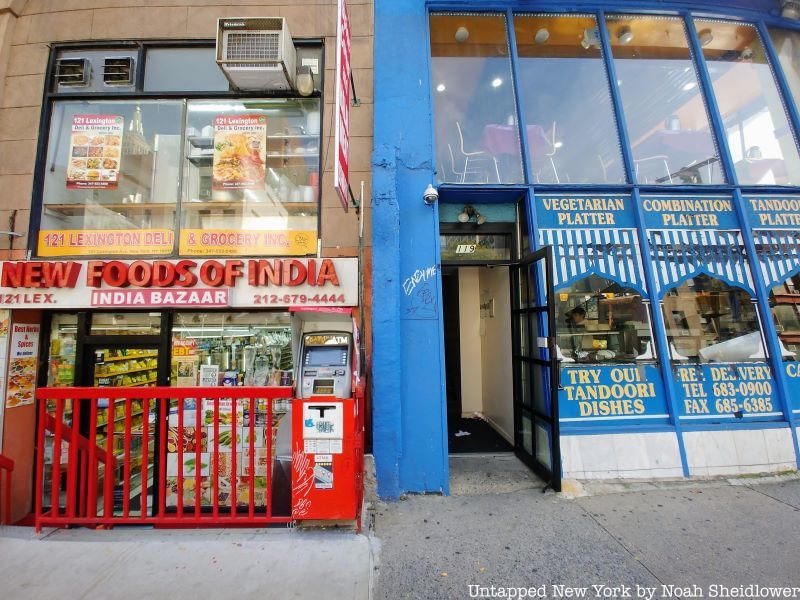
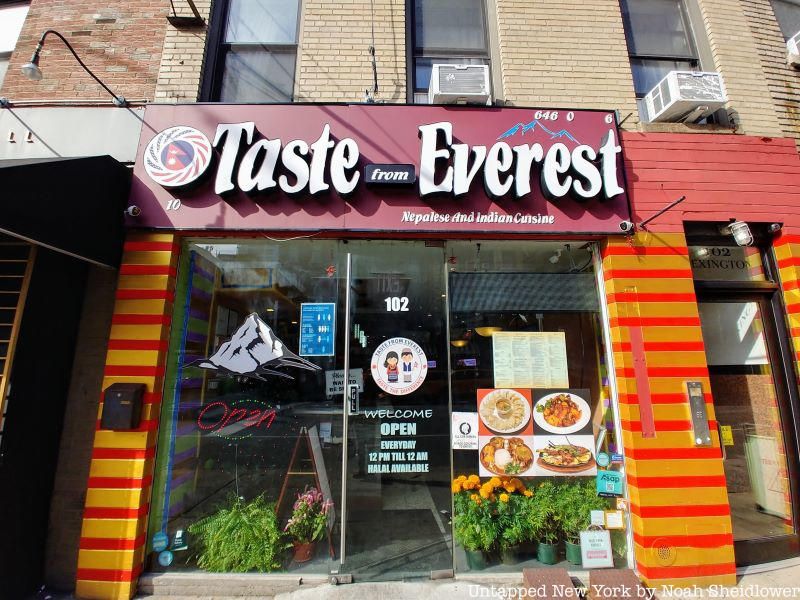
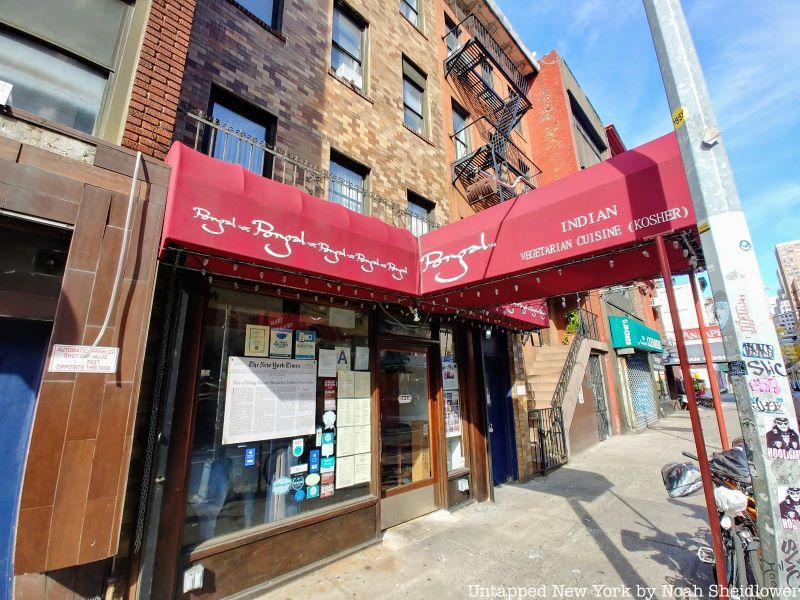
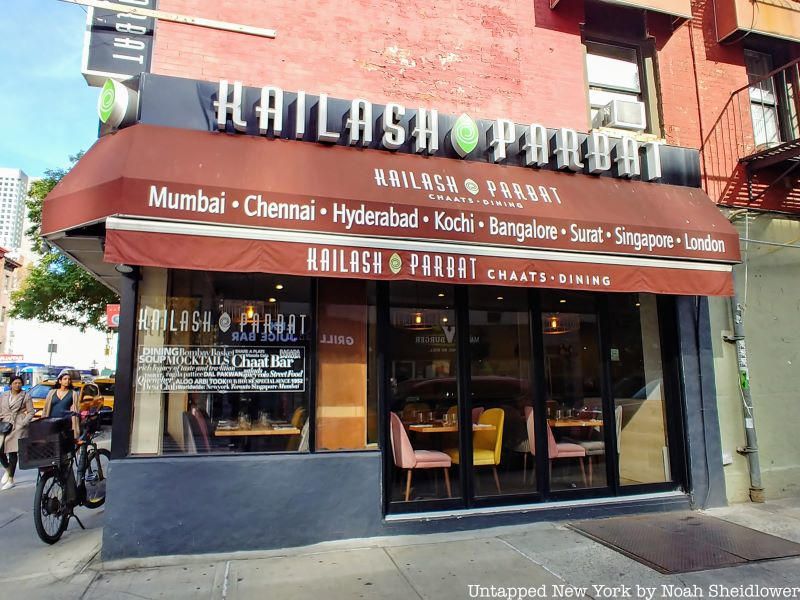
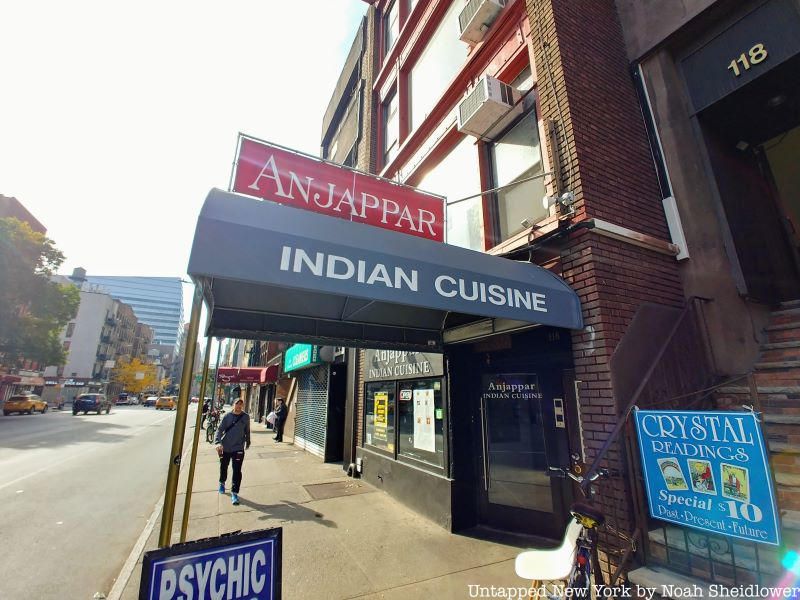
The border between Kips Bay and Rose Hill is often debated, with some maps showing the neighborhoods overlapping. The broad consensus, though, is that Kips Bay extends either to Third Avenue or Lexington Avenue, both of which are home to Manhattan’s Little India. Between 25th and 30th Streets, primarily along Lexington Avenue, are well over two dozen Indian restaurants and shops, as well as some from neighboring Pakistan, Bangladesh, and Nepal. Though previously the center of Little Armenia, the area shifted in part due to Kalustyan’s, a Middle Eastern spice and food shop that now sells predominantly Indian products. Indian immigration to the area rapidly grew during the 1960s. By the 1980s, much of the Indian population moved to Queens due to cheaper rents, but the area’s Indian population quickly grew again during the early 2000s. Another area in New York City similar to Little India is “Curry Row” in the East Village along 1st and 2nd Avenues.
Among the top-rated Indian restaurants in Kips Bay/Rose Hill are Pippali, which specializes in South Indian fare; Taste From Everest, which fuses Indian and Nepali cooking; and Mughlai Indian Cuisine, which also has locations on West 55th Street and on 2nd Avenue. The area has plenty of vegetarian spots, such as Vatan, and Pongal. Hole-in-the-wall spots include Haandi, which has a large buffet table at the front and offers some Pakistani dishes, and Anjappar Chettinad Restaurant. Grocers such as Little India and New Foods of India offer a wide range of Indian spices, produce, and desserts as well.
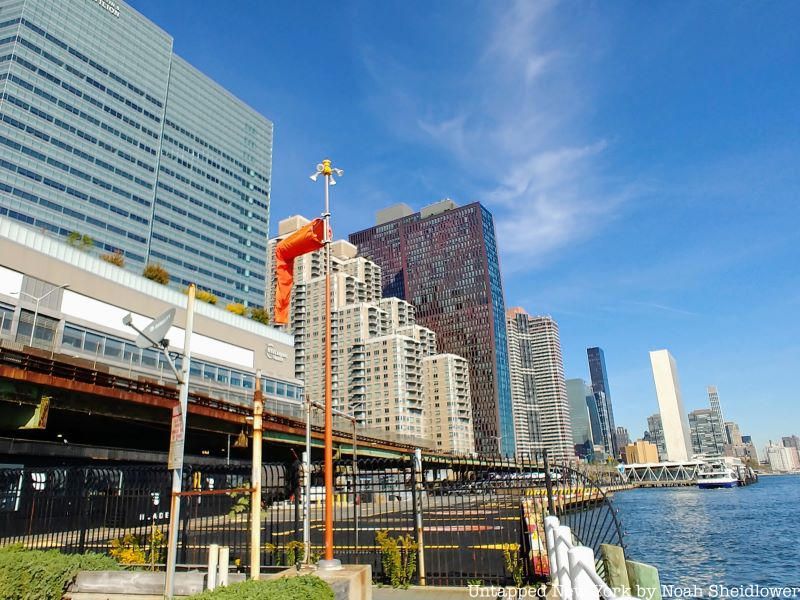
The Landing at Kip’s Bay was the site of a British amphibious landing on the East River during the Revolutionary War. The British, commanded by Henry Clinton and Richard Howe, faced off against the troops of George Washington on September 15, 1776. The British had earlier embarked on a campaign to gain control of New York City, and forces under William Howe made landings at Staten Island and Long Island, leading Washington to retreat into Manhattan. Washington, in anticipation of Howe’s next attack, spread troops across Manhattan (also called York Island at the time) and Westchester. Howe’s troops were in fact moving north up the East River, and Nathanael Greene advised Washington to retreat from Manhattan and burn the city. Washington ultimately decided to abandon New York City, moving north to Harlem while some troops stayed south.
Howe landed at Kip’s Bay while American troops struggled to return fire due to intense dust and smoke. Washington and his troops arrived at Kip’s Bay after the landing began, and he reportedly expressed anger toward his troops for becoming disordered. After only a few obeyed his commands, he supposedly shouted, “Are these the men with which I am to defend America?” Increasingly more British soldiers arrived as the battle progressed, but most of the Americans managed to escape north. After the landing, the British raised the Union Jack over New York City, and Howe led his troops up to Harlem. Washington called the actions of his troops “scandalous” and “shameful.” Just one day later, however, he engaged with the British at the Battle of Harlem Heights which was a costly but important American victory.
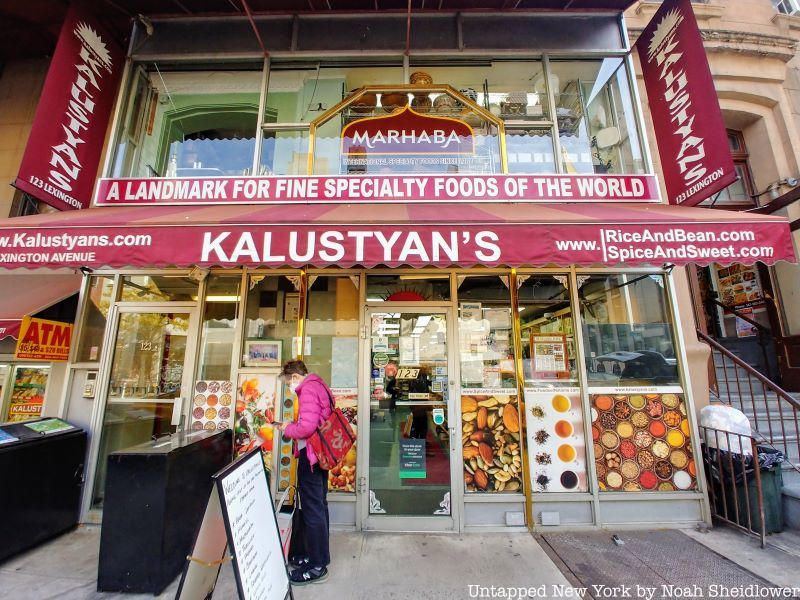
The Chester A. Arthur Home was the residence of the 21st U.S. President while he was in office. The home at 123 Lexington Avenue is now occupied on the bottom two floors by Kalustyan’s (meaning it’s technically at the intersection of Kips Bay and Rose Hill). The home is the only surviving building in the city that has hosted a presidential inauguration (the Federal Hall building where George Washington was inaugurated has been replaced, but you can still see remnants of the original!). Arthur’s inauguration took place in Kips Bay in 1881. Arthur spent most of his adult life in the same building, and it was here that he retreated after the shooting and eventual death of James Garfield. After serving his term in the White House, he returned to the home in 1885. He died here the following year.
The five-story home was added to the National Register of Historic Places in 1966. The home was eventually purchased by William Randolph Hearst, and subsequent owners moved the main entrance and converted the upper floors into apartments. A bronze plaque was placed on the building in 1964 on the 81st anniversary of the signing of the U.S. Civil Service Act.
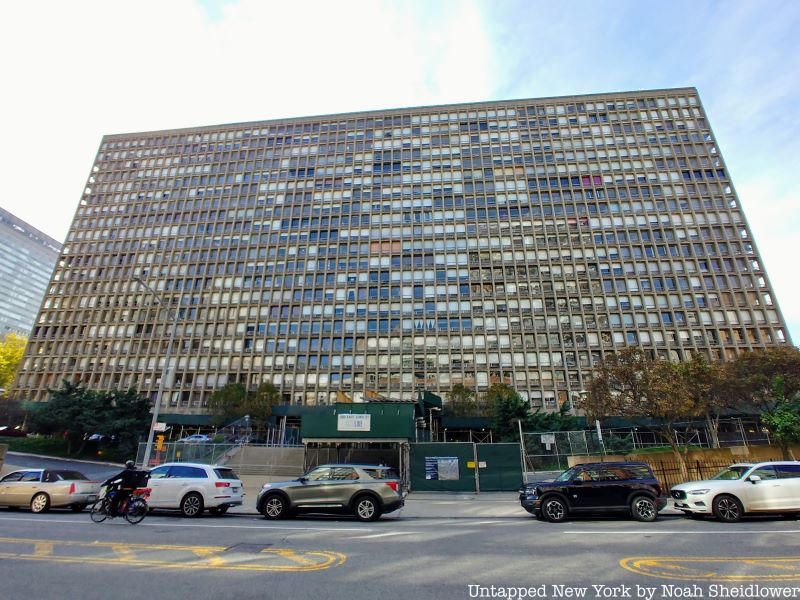
Kips Bay Towers is a two-building condominium that takes up the entirety of East 30th to East 33rd Streets between 1st and 2nd Avenues. The brutalist-style buildings were completed in 1965 and were designed by none other than I.M. Pei, the mastermind behind New York’s Four Seasons Hotel, Silver Towers, and The Centurion, in addition to dozens of other famous structures globally including the Louvre Pyramid. Pei collaborated with S.J. Kessler and James Ingo Freed, the latter of whom collaborated on the Javits Center and the U.S. Air Force Memorial.
The project was conceived as middle-class housing, though it was converted to condominiums in the 1980s, despite some logistical challenges. Pei tried to get a Picasso sculpture on-site, though he settled on 50 trees instead. Kips Bay Gardens, a park and playground that is now part of the Towers, was built in the 1960s. It was closed to the public in the 1980s. Today, the Towers host about 4,000 residents, and both buildings rise to 20 floors.
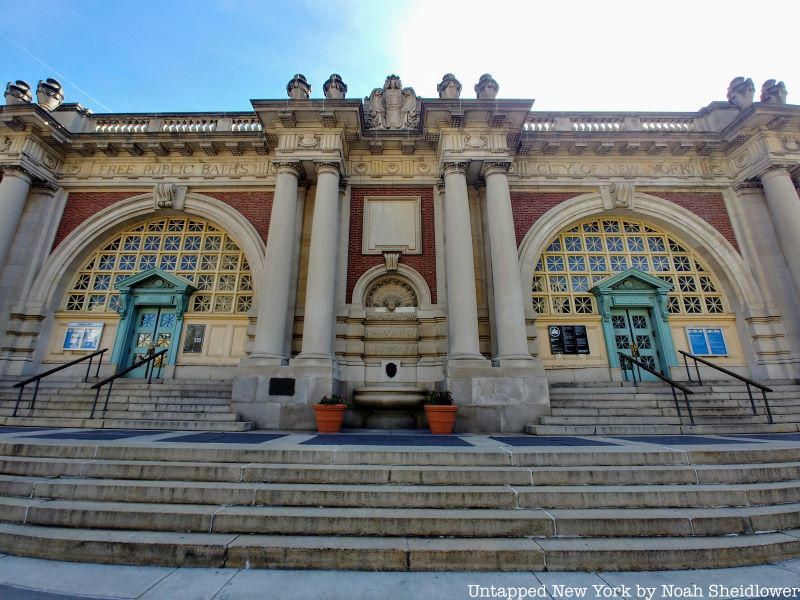
One of the great architectural gems of Kips Bay is the 20th-century Asser Levy Recreation Center. Formerly known as the East 23rd Street Bathhouse, the building was designed by noted architects Arnold W. Brunner and William Martin Aike in a style reminiscent of the ancient baths of Rome. The elaborate design was inspired by the “City Beaitiful” movement, which strived to create civi architecture in America that would rival the great civic structures of Europe. The practical purpose of the pretty building was to help ward off disease. In mid-19th century New York City, with the booming population growth and less than ideal sanitary conditions, illnesses like chloera and typhoid ran rampant. To combat the spread of such sickness, reformers campaigned for municipally-run public bathhouses. The first in New York City wuoldn’topen until 1901.
The East 23rd Street Bathhouse in Kips Bay opened in 1908. It was renamed The Asser Levy Recreation Center in 1954. Levy was one of New York City’s first Jewish residents, fleeing Brazil with a small group of other Jewish people in 1654. When Peter Stuyvesant attempted to evict Jewish people from the settlement of New Amsterdam, Levy became a staunch advocate for Jewish civil rights, fighting to defend their rights to citizenship, to bear arms, and to own property. Holder of many first titles including first kosher butcher in the new colonies, Levy was also a founding member of Shearith Israel, the country’s first Jewish congregation. That building shares an architect, Arnold W. Brunner, with the bathhouse. The bathhouse received landmark designated in 1974, but was closed to the public from 1988 to 1990 for extensive restoration work. It is now open once again featuring even more recreational facilities inside and out, including a playground built specifically for disabled children.
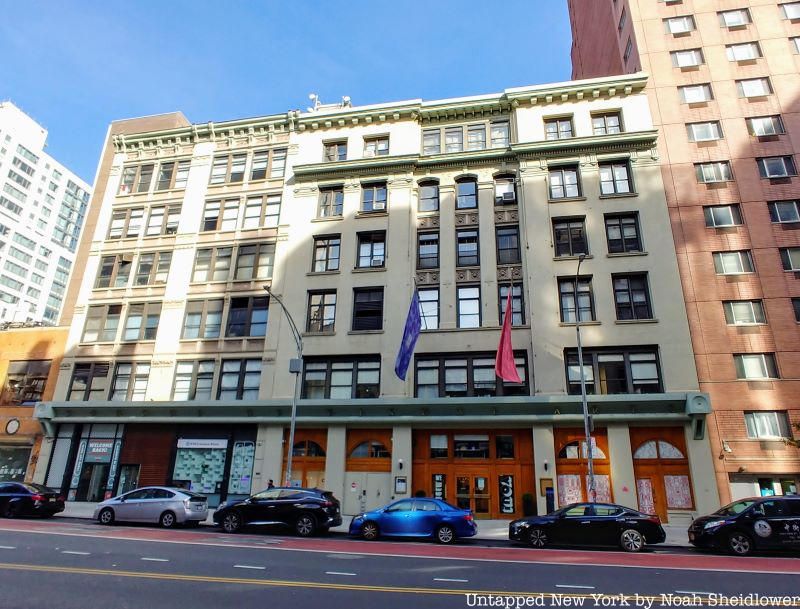
The School of Visual Arts, centered around East 23rd Street, is a private arts school with nearly 4,000 undergraduates. Started in 1947 as the Cartoonists and Illustrators School, SVA first catered to World War II veterans and first began offering degrees in 1972. SVA offers majors in everything from computer art and animation to interior design to advertising. Alumni have included actor Jared Leto, director Carlos Saldanha, co-founder of My Chemical Romance Gerard Way, and artist Keith Haring, who was expelled when he used the interior of an SVA building for a graffiti project. Faculty have included comics creator Will Eisner, graffiti artist KAWS, and artist Sol LeWitt.
One famous professor who has quite a few places around campus dedicated to him is Milton Glaser, designer of the acclaimed “I Love NY” logo. Glaser, the first graphic designer to ever receive the National Medal of the Arts, introduced the logo in 1977 to promote tourism to the state. He drew up his idea for the design on scrap paper in the back of a taxi. Glaser designed the interior and exterior of the SVA Theatre in 2009. The SVA’s Design Study Center and Archives bear his name and house many of his illustrations.
Next, check out the Top 10 Secrets of Murray Hill!
Subscribe to our newsletter